Video screening
Curator: Yunnia Yang
Wednesday, 3 July 2019, 8pm
Project Room SCCA, Metelkova 6, Ljubljana
Artists: Miloš Tomić (Srbija), Katrina Neibruga (Latvija), Marius Gherasim (Romunija), Vlad Buzaianu (Romunija), Boris Kozlov (Srbija), Blue Noses (Rusija), Igor Grubić (Hrvaška), Jan Pfeiffer (Češka republika), Gentian Shkurti (Albanija), Olson Lamaj (Albanija), Anastasija Piroženko (Litva)
INTRODUCTION BY YUNNIA YANG
“Global Village” is the term that Marshall McLuhan brought out in 1962, presenting the concept that the human relations all over the world get closer by means of various social media and social networking to improve mutual understandings about humanistic thoughts and cultural differences. By 1989 the international community had been divided into two principal camps (capitalist and socialist), which lead to misunderstandings, confrontations and even unavoidable sacrifices. After the collapse of the Soviet regime, these post-socialist countries make efforts to integrate themselves into the world through the Perestroika, subsequent democratification and neolibralism. Such kind of integration is that the Eastern European countries expected much more to be a member of the European Union and most of them succeeded to fulfill this dream. Russia also enjoys economic prosperity and becomes one of the BRICS countries. The optimistic atmosphere spreads out in the global age, making us believe that we’ ll have better future thanks to this integration. In fact, transitions and transformations in political, economical, social and cultural aspects are still overlingering in everyday life of the locals, whose states of mind are haunted by the sense of in-betweenness. The video research project The In-between State of Mind is dedicated to the artists, who experience the drastic change after the end of the communist regime and witness how people embrace new capitalist lifestyle, perceiving the alternative evolutions out of this binary system and responding to this postsocialist condition with visual lyricism, witty irony and creative imagination.
The new world discloses enormous temptations, which people might get lost in and distort personal values (Marius Gherasim‘s “Lost”). In a highly materialistic society, everything could be commodity to buy and sell; dreams are no exception (Vlad Buzaianu’s “Dreams on Sale”). The artistic subversions against the consumerism might be delicately demonstrated in a sense of humor . Poverty is an complex issue for the ex-communist countries to get rid of, but for their people inspirations to find out alternative solution to live. Longing for the better life of the West, assimilation into the western lifestyle is just like a country-wide movement (Anastasija Piroženko‘s “Syndromes of Mimicry). The globalisation is not necessarily bad or good; it matters if it can reflect the fundamental concepts of humanism such as multiculturalism and biodiversity (Boris Kozlov‘s “The Postmodern Pioneer Plaque”), especially for this region full of rich cultural heritages. Mutual love goes beyond any political definitions about sexes, genders, races, religions, species, etc. War can cause massive destruction and turn the whole world into hell immediately (Miloš Tomić‘s “Clay Pigeon”). Although Mankind understands well such terrible consequence, egoism is stronger than altruism in reality. Nowadays, bellicose psychology can be widely observed in the virtual world of video games. As the borderline between the reality and the virtuality is removed, the cruel action of killing could occur to any video gamer, even a little child. War trauma shadows over one’s whole life during peacetime, and it is also a collective memory for the witnesses to warfare.
Media, tourism, and commercialism are fetal factors to influence the cultural understandings about the postsocialist countries. Stereotypes and fairytales both are prevailing attitude. In today’s world it is hard to find the truth, even history could be constructed. To break these cultural illusions, the artists use the approaches of mingling fiction and reality, parody, topology (Jan Pfeiffer‘s “Support Points IV”), negation (Gentian Shkurti‘s “Color Blind in Tirana”), and demythification (Olson Lamaj‘s “How stars are born?”). Nonetheless, the constructed illusions still remain in the minds of the people under the communist regime over decades (Katrina Neiburga‘s “Press House”). The artists resort to the fundamental questions about non-humanity, negative theology, human rights (Igor Grubić‘s “East Side Story”), and legacy of totalitarianism, crucial for the contemporaries to figure out the real world where they live in.
As to artistic creativity, the artists are never slaved by the overwhelming new media to lose their own originality, and neither get assimilated by the western aesthetics. The low tech might compete the efficiency and the convenience of advanced technology in our contemporary world, but gives us a touch of humanity and laughters out of irrationality and illogicality (Blue Noses’ “Absolute Blue Noses”). We can see how their creativity brings us unexpectable imageries (Miloš Tomić‘s “Clay Pigeon”), and conceptual illuminations. With the help of new media, the artists could explore the new visual languages to interpret the contemporary living conditions and to throw down a challenge to us to contemplate The In-between State of Mind (Marius Gherasim‘s “Lost”, Vlad Buzaianu‘s “Dreams on Sale”).
VIDEO WORKS:
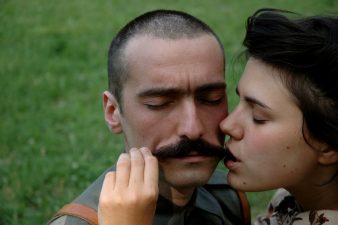
Miloš Tomić (Serbia), Clay Pigeon, 6’41”, 2005
Clay Pigeon is love story with scary moments. Couple in love game before unexpected but fatal goodbye. Solider and a girl, on the grass. And under the grass.
Miloš Tomić is filmmaker with few other passions: collage making, bad music playing, collecting precious trash from the street… He was born in Belgrade, Serbia in 1976, where he studied film direction, than animation in Prague, at FAMU. Drifting between diary films, voayeristic ones and elaborate animations in combined stop-motion technique. Miloš Tomić’s works have been presented for the exhibition “ Nothing between us” with Vladimir Perić at the Serbian Pavilion of the 55th Venice Biennale in 2013.
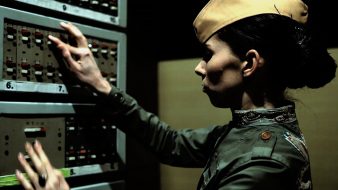
Katarina Neiburga (Latvia), Press House (Music Video Version), Andris Indans (Sound), 5’14”, 2009
Press House is a twenty-two story building in Riga, built in 1978 to host different publishing houses, editorial offices of newspapers and magazines, as well as a printing house. Left abandoned since regime change due to dwindling profitability, Press House was once an important place where its workers were constantly negotiating the freedom of the press with the boundaries of censorship. The artist’s interest in Press House starts with the people who once worked there. As either complicit in or terrorized by censorship, they spent an impressive part of their lives on site.
Katrina Neiburga was born in 1978. She holds an MA from the Latvian Academy of Art in visual communications. She has been exhibiting since 2000 and has participated in the Sydney and Moscow biennales. In 2008, she was short-listed for the Ars Fennica Award and received the Purvitis Prize, which is the highest Latvian award in fine arts. For Katrina Neiburga, art is subordinate to a yearning for emotion, authenticity and the preservation of living memory. It is poetry that operates at the level of perception and feeling: pared to the bone, saturated with truth, searing and beautiful. One of Neiburga’s chief means of expression is her deeply personal iconography, which is evident in her video installations, both in exhibitions and as theatre set designs. She is interested in sociology, investigating preconceptions about the nature of things.
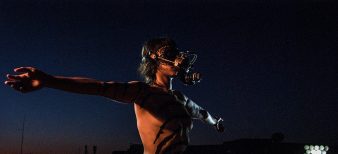
Marius Gherasim (Romania), Lost, 4’39’’, 2015
Lost is a mixed collection of images that gather to form a claustrophobic rhythm revealing symbolic meanings. The old religion has lost its function. The mechanism and technology is forming a new spirituality. The ancient symbols are almost humorous. Sense and nonsense melts together for ‘what is to come’.
Marius Gherasim is a rockstar from Bucharest, Romania. Marius attended, at one point, with no recollection at all, the courses of the national university of arts of Bucharest having an interest in graphic arts. After a few etches (itches) he decided to abandon industrial design too and move to film. Now he is thirty two and residing near Bucharest, collaborating with his own demons, filming, photographing and painting from time to time.
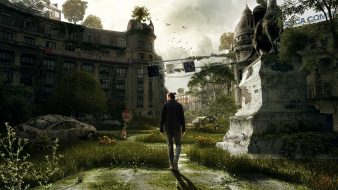
Vlad Buzaianu (Romania), Dreams On Sale, 9’23’’, 2016
In a world where people are able to record, buy and sell dreams, many are starting to lose the ability of dreaming. Dreams have become a new form of art and a commodity for the rich class.
Vlad Buzaianu lives and works in Bucharest. Here he graduated in business studies and psychology. Dream on Sale is his first film project. About this film, he says: “We tried to do something that was never done before: use dreams as a metaphor for our day to day lost dreams. It is a film for all the people struggling with their dead end jobs while asking themselves why they did not pursue any of their actual dreams. After two years of work we feel that we manage to end up with a fresh and interesting project that will take the viewer from reality to dream world and back.”
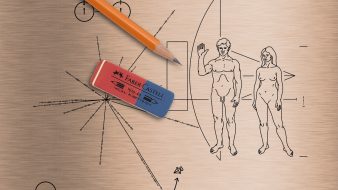
Boris Kozlov (Serbia), The Postmodern Pioneer Plaque, 7’51’’, 2016
In 1973 Carl Sagan created the Pionner Plaque for the NASA Pioneer 10 mission. It was Humanity’s first message for extraterrestrial civilizations. Today, four decades later, the World gets together to collectively compose a new message…
Boris Kozlov was born in Belgrade (1977, Former Yugoslavia). Living in Madrid (Spain). Combines creative work in advertisement with experimental filmmaking. Obsessively trying to crack the code of the psychotic farce also know as normality.
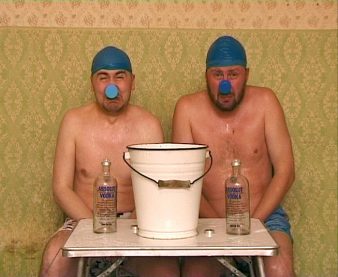
Blue Noses (Russia), Absolut Blue Noses, 7’9”, 2002
The Blue Noses used low-tech methods to produce video clips advertising vodka Absolut.
The Blue Noses group originated in 1999. Viacheslav Mizin was born in 1962 in Novosibirsk. Alexander Shaburov was born in 1965 in Berezovsky town (Sverdlovsk Region). A number of other artists — Dmitry Bulnygin, Yevgeny Ivanov, Konstantin Skotnikov and others — also contributed to Blue Noses projects. The Blue Noses participated in the 1st, 2nd and 3rd Moscow Biennales of Contemporary Art, in the 50th and 51st Venice Biennales and other international exhibitions. The group co-operates with M. & Yu. Guelman Art Gallery (Moscow), «In Citu» Fabienne Leclerc (Paris), Galerie Volker Diehl (Berlin), Hans Knoll Gallery (Vienna, Budapest), Loushy Art & Projects (Tel Aviv), Art Issue (Beijing, Seoul), B&D Studio (Milan), Ethan Cohen Fine Arts (New York).
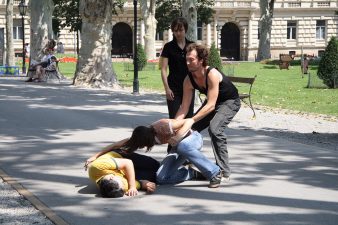
Igor Grubić (Croatia), East Side Story, 14”, 2006-2008
East Side Story employs a specific media language to speak about a social problem of our time – the problem of violence and intolerance towards the other and different. Juxtaposing different media representations, such as archival footage of documentary origin about the violence on the streets of Zagreb and Belgrade as a recent found footage material combined with the “staged” performance based live-action footage of a choreographed dance performance where the language of movement mimics the violent actions taking place on locations it really happened, Grubić achieves a dramatic effect.
Igor Grubić has worked as a multimedia artist since the early 1990s. His work includes site-specific interventions in public spaces, photography, and film. In 2000, he started to work as a producer and author of documentaries, TV reports, and socially engaged advertisements. His work has been exhibited in various international institutions and at different artistic and cultural events. He has been awarded several times. Exhibited f.e. at Manifesta 4 (Frankfurt); Tirana Biennial 2; 50. October Salon (Belgrade); 11. Istanbul Biennial; 4. Fotofestival (Mannheim); Manifesta 9 (Genk); Gwangju Biennale 20th Anniversary Special Project; ‘East Side Stories’ Palais de Tokyo (Paris); Thessaloniki biennale 5-Ident-alter-ity ; ‘Zero Tolerance’, MoMA, PS1(NY).
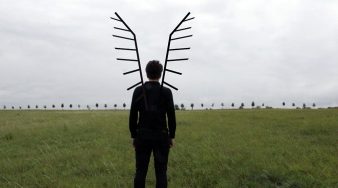
Jan Pfeiffer (Czech Republic), Support Points IV, 3’18”, 2016
Support Points IV consist from two parts, in the introduction is main character women in the white, which taking care, protect small boy. In the second part is acting man in black, lines and symbols appear around him as advance of will and future acts. Video is part of the project made by Pfeiffer call “Support Points”.
Jan Pfeiffer lives and works in Prague. Studied at the Academy of Fine Arts in Prague (2006–2011), Prague College School of Art & Design (2002–2005) and the Cooper Union in New York (2011). He is represented by Drdova Gallery. He has taken part in numerous exhibitions in the Czech Republic and abroad. Prizes include the Essl Art Award CEE (2009), and the 8 Henkel Award (2011). Pfeifer employs photography, video, drawing and animation as documentary tools, which he subsequently transforms in the concepts of his exhibitions and forms of presentation. He tends to target the topos of the location and its perception. The majority of Pfeiffer’s works are based on an analysis of everyday situations and how we experience them; they frequently refer to a specific location, to movement and its trajectory and to a search for one’s own place in the structures of reality.
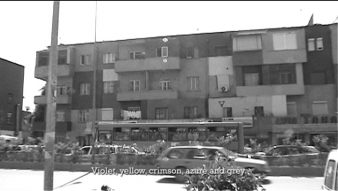
Gentian Shkurti (Albania), Color Blind in Tirana, 3’56”, 2004
The Mayor of Tirana, a painter, decides to colorfully paint the facades of the city’s buildings by camouflaging this way the misery of the other side of the facade. It was clarified by said Mayor that the intention behind the painting or camouflaging of the facades was to nurture optimism among the citizens. The video was conceived as a fictional dialogue between a color blind individual, who does not perceive any colors as a result of an accident, and a girl who describes the colors of the city for him. The video is in black and white, so that it can put the viewer in the boy’s shoes.
Gentian Shkurti studied Painting at the Academy of Arts in Tirana, Albania. Worked two years as associate professor in Academy of Arts in Tirana, Albania. His works have been exhibitied at Centre Georges Pompidou (Paris), Documenta – Fridericianum Museum (Kassel), 54 Venice Biennale (Albanian Pavillion), Chelsea Art Museum (New York), Museum of Modern Art (Ljubljana) National Gallery of Kosovo, National Gallery of Arts (Tirana), Sammlung Essl (Klosterneuburg, Viena), K&S Gallery (Berlin) and Tirana Biennale 1. He lives in Tirana (Albania).
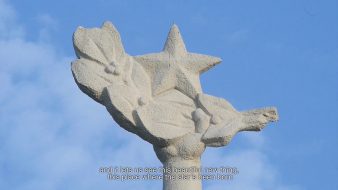
Olson Lamaj (Albania), How Stars are born?, 4’3”, 2015
How stars are born? is a genuine act of presenting pure and simple the ideological battles that use the same signifies to transmit quite different ‘spirits of time’. Not relying at all on excessive discursive framing of artwork, one that the contemporary art suffers from heavily, Olson mashes three dimensions of “the star” in a confused imagery and narration. He only traces the ideological overlays of transition, a process which paints post-modern lifestyle over the layer of contested heritage of an ex-comunist country and society, generating a condition of latent absurdity. The monuments of a ‘glorious past’ and the partisan stories of grandfathers continue to be present alongside commercials of a consumerist culture and kiestch local manipulations with the US/EU symbols. The narration on star science stands in a position of complete absurdity to the ideological constructs of the meaning of ‘the star’. This is the predicament of transitional societies, no clarity for the past, and no viable future, always remaining with in the thick line of confusion.
Born and raised in Albania, Olson Lamaj studied visual art in Milan where he has worked and lived for several years. He has participated in various exhibitions throughout Europe and in his native Albania. He works in several media including photography, video, painting and installation, though his work is typically serial photography executed over a long period of time. In addition, he makes site-specific work when inspired by a physical place. His training in the Italian academy has deeply impacted his practice, not only in his treatment of photography as an art medium, but also in his ability to notice and capture the absurdities, ironies, and contradictions that are a result of the unregulated and fast-paced change that characterizes contemporary urban Albania. As an artist who lives between two different worlds, Lamaj is sensitive to these transformations and shares the peculiar visions that this position affords him.
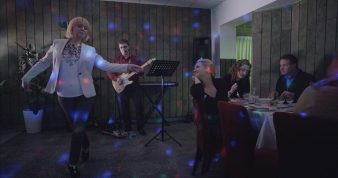
Anastasija Piroženko (Lithuania), Syndromes of Mimicry, 18′, 2016
What could possibly link a village nightclub, where a musician mindlessly recites popular Western melodies, a mute black man delivering flowers in a Hussar uniform, and a yoga class attracting people in search of religious identity? Syndromes of Mimicry tackles the imitation of the Western concepts that occurred in Lithuania after regaining its independence. In the series of short sketches, the satire presents various attempts in the identity search in social, political and cultural field.
Anastasija Piroženko is an audio-visual artist and filmmaker from Lithuania, currently based in Amsterdam. She holds a BA in Photography and Media Arts from Vilnius Academy of Arts (2012) and a MA in Film from the Netherlands Film Academy (2016). Anastasija’s artistic practice spans between film, video, and photography. The notions of home, community and utopia, are recurring themes in her work. Often, her films balance between fiction and real.
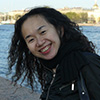 Yunnia Yang is a curator, art historian and art critic based in Taipei, Taiwan. She has received the MA in Art History from St. Petersburg State University in Russia in 1997, and PhD in Arts from National Taiwan Normal University with the thesis ‘Study on “the Paranoiac-Criticism” of Salvador Dalí’ in 2009, with which she was awarded S-An Aesthetics Award in 2010.
Yunnia Yang is a curator, art historian and art critic based in Taipei, Taiwan. She has received the MA in Art History from St. Petersburg State University in Russia in 1997, and PhD in Arts from National Taiwan Normal University with the thesis ‘Study on “the Paranoiac-Criticism” of Salvador Dalí’ in 2009, with which she was awarded S-An Aesthetics Award in 2010.
During this period, she managed all kinds of exhibitions, performances, and art events in Taiwan. Since 2011, she has launched the long-term curatorial research on ‘ The Postmodern Condition in the contemporary art of Russia and Eastern Europe’. Hong Kong World Cultures Festival 2013 has been devoted to the focal theme ‘Lasting Legacies of Eastern Europe’, and has invited Yunnia Yang as a guest speaker to share her two-year research and observation on Russia and Eastern Europe. Her representative curatorial projects are “ The Apocalyptic Sensibility: The New Media Art from Taiwan” (WRO Media Art Biennale 2013, Taipei Fine Art Museum in 2015), “Imagining Crisis” (MOCA Taipei in 2014, the contemporary art centers in Poland, Serbia, Bulgaria, Colombia, 34th Asolo Art Film Festival during 2014-2015, and Loop Barcelona in 2018) and “ TAIWAN VIDEA: the Taiwanese Avant-garde Video Exhibition” ( 2015 Asolo Art Film Festival, 2018 Loop Barcelona). In 2016, she is also invited by Asolo Art Film Festival Committee to present “Eco as a verb” as Focal Theme Exhibition of the 35th edition film festival and another video project “TAIWAN VIDEA2.0:Cultural Encounter” . In May of 2017, these two projects has been invited by the Museum of nonconformist art (MoNA) and the Pushkinskaya-10 art centre to to participate in the official program of the St. Petersburg Museum Night 2017. Yunnia Yang curates “TAIWAN VIDEA 2017 Selection ” to tour around Macedonia ( The Museum of Contemporary Art in Skopje), Croatia (Galerija AŽ in Zagreb), Slovenia ( SCCA-Ljubljana), Germany (Rosalux in Berlin), and Italy (36th Asolo Art Film Festival) during July-September 2017.
She is a guest curator of Yo-Chang Art Museum in National Taiwan University of Arts in 2017, presenting the international video installation exhibition “ Fibering-Eco As A Verb”. In addition, the curator Yunnia Yang has been invited by the 34th-35th Asolo Art Film Festival as an international jury and has been selected by the international jury board as the President of the 34th Asolo Art Film Festival’s International Jury Board. Her latest curatorial project is The Eastern Europe/Russia Video Research “The In-Between State of Mind” commissed by 36th Asolo Art Film Festival in 2018 for the special program of BRICS ART. In 2019, “The In-Between State of Mind” will be screened and exhibited around Germany, Latvia,Slovenia, and Hungary.
Dr. Yunnia Yang is currently the Adjunct Associate Professor of the Department of Sculpture at the National Taiwan University of Arts.
![]()
No Nails, No Pedestals program is presenting authors, working in the field of contemporary artistic practices (installations, performances, video, interdisciplinary & web projects).
